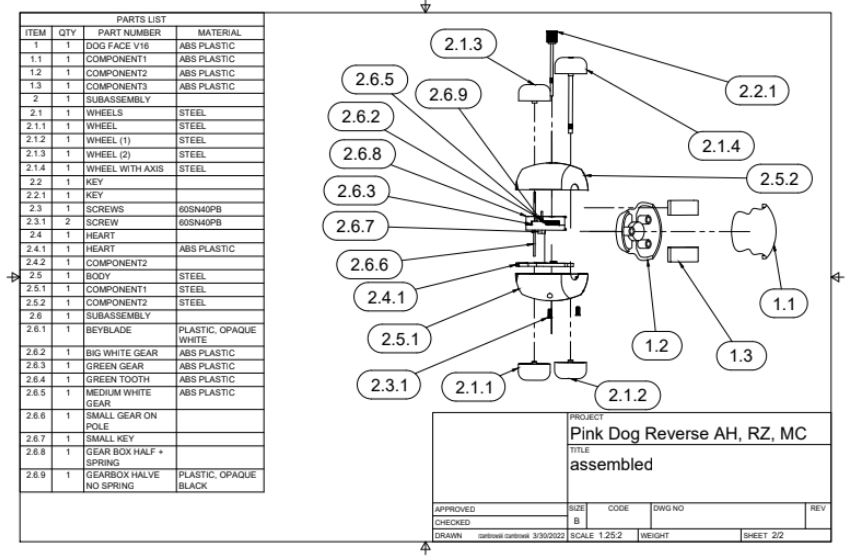
Student Work | Mass STEM Hub
High School | HS Engineering | IED | Activity: Reverse Engineering | 3rd Place High School Engineering Project
May 26, 2022
Grade: High School
PLTW Course: Introduction to Engineering Design
Submission type: Activity: Reverse Engineering
Project overview: In their Introduction to Engineering Design course, high school students learn how to apply the engineering design process to identify and solve a variety of real-world problems. In this activity, students are applying engineering principles and practices to reverse engineer a consumer product. Reverse engineering involves disassembling and analyzing a product or system to understand and document the visual, functional, and/or structural aspects of its design.
Select student submission materials:


Link to full project: click here
Select judge feedback: “Thank you for participating in the Mass STEM hub activity. I am a research scientist and I work for Philips research North America, where my colleagues and I work on making the operating rooms safer, smarter and more user friendly for physicians and patients.
I have taken the time to review your assignment. I truly appreciate your efforts for reverse engineering the Chinatera clockwork wind up pink dog toy. I enjoyed looking at the detailed report, drawings, photos, and 3D demonstrations. One other important aspect in presenting a high-quality work is the collaboration which I saw in your presentation. I also liked the fact that you made the 3D drawings of all the small pieces and the whole product (a simplified version of it).
I was just wondering about the way you did your measurements. Were they done by one of you? Did you measure every object only once or multiple times and averaged them? Did multiple people participate in measurement process? As you may know, inter- and intra-operator variability is an important aspect when we want to evaluate an object or even a process. As an example, when we design a new medical device, we let multiple physicians to try it and provide us with their observations. One person may use prescription glasses whereas the other person may be older or younger, taller or shorter, etc. and all these differences affect the outcome of our product. Even when we ask one person to do the same task multiple times, we may see different results each time. In this way we define the tolerance or even the stability of our output. This analysis helps us improving our designs.
I hope that you have learned from this activity and will continue pursuing STEM education and careers in the future.”
-Research Scientist, Philips
“Hi. I am currently a Sr. Human Factors Engineer supporting the design and development of Hugo RAS (remote assisted surgical system) being used world wide for minimally invasive tele-robotic assisted surgeries. I am part of a systems team who is designing the new features and new instruments that will be added to our remoted assisted tele-robotic platform. In our daily work we think about customer needs, derive requirements from these needs and design SW features to meet these requirements.
You did a great job with both the visual and functional analysis. It is clear you understand the overall function the device and that you thought through the fundamental concepts that helped drive this function. It was great to see this kind of analysis, you crank up a key energy gets stored and then energy gets released and you have movement!
Did you consider taking this approach as you did the evaluation of each of the components? This might be complicated at first because there are so many small components and its hard to know sometimes how they all interact to create the overall function. But this type of analysis because very important in your design thinking. Try to think through the primary function how do I go from wind-up key to the wheels rolling? What are the interactions in the components that allow for this movement?
On your visual analysis you thought through why certain aspects were designed. For example you mention the designers put emphasis on the white cap on the crank. Why do you think they were trying to put emphasis on this crank?
As a human factors engineer my job is to consider the use of the environment and bring that perspective to the design of the device. Being in the medical industry we strive to design out any interactions that might lead to unsafe use of our device, or design in ways to make it easier, safer and overall a better user experience. For example, we have a mechanical way to release surgical instruments from tissue if we were to ever lose power to our robotic arms. Our users do not typically have to engage these mechanical releases and our design team has chosen a color scheme that is very neutral (tan) and highlights components that need to be emphasized such as these mechanical releases (orange). This should help our users in two ways: avoid engaging these releases unless they need to and identifying them when they are needed. In a similar way the toy designers might have chosen very pleasing colors for their toy in all the same color scheme (variation of pinks) and used contrast to emphasize or deemphasize features. The white color can then be used to emphasize a feature that we need to stand out. I cant expect parents and definitely not kids to read instructions so I want to make that crank as distinctive as possible while still being appealing and making it white serves that purpose!”
-Senior Human Factors Engineer, Medtronic
Industry Award: 3rd Place High School Engineering Project
School: Medway High School
Teacher: Jon Jasinski


